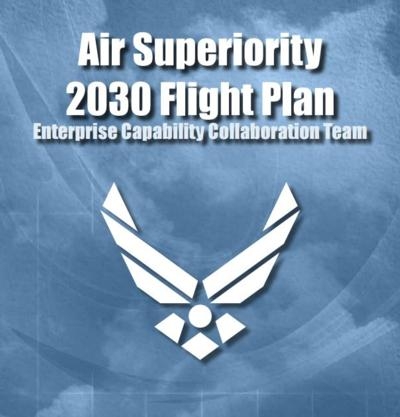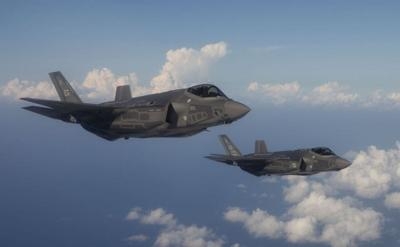Air Force Projects That Current Force Structure May Not Be Adequate To Fight And Win Against Potential Enemies
The Air Force released a flight plan directing development activity as a result of a yearlong study focused on developing capability options to ensure joint force air superiority in 2030 and beyond.

According to the unclassified version of the Air Superiority 2030 Flight Plan, released May 26, the gap between the U.S. military’s air superiority capabilities and potential adversaries’ means, as it currently stands, the Air Force’s projected force structure in 2030 may not be capable of fighting and winning against those adversary capabilities.
In order to counter emerging threats, air superiority must be viewed as a condition the Air Force sets to enable joint forces to accomplish mission objectives, and not as an end in and of itself. Providing the capabilities to do this will require multi-domain solutions developed through a more agile acquisition process.
“After 25 years of being the only great power out there, we’re returning to a world of great power competition,” said Lt. Gen. Mike Holmes, the Air Force deputy chief of staff for strategic plans and requirements. “We need to develop coordinated solutions that bring air, space, cyber, the electronic environment and surface capabilities together to solve our problems.”
The flight plan, put together by an enterprise capability collaboration team composed of Air Force operators, acquirers and analysts, says that to achieve air superiority in 2030 and beyond, the Air Force needs to develop a family of capabilities that operate in and across the air, space and cyberspace domains, including both stand-off and stand-in forces.
The speed of capability development and fielding will be crucial to retaining the U.S. advantage. The service can no longer afford to develop weapon systems on acquisition and development timelines using traditional approaches. According to the ECCT, air superiority capability development requires adaptable, affordable and agile processes with increasing collaboration between science and technology, acquisition, requirements and industry professionals.
“There’s no silver bullet,” said Col. Alexus Grynkewich, the Air Superiority 2030 ECCT lead. “We have to match tech cycles -- some of them are really long. Engines take a long time to make, but information age tech cycles are fast. Software updates are constantly moving. So how do you move from pacing yourself off industrial age mindsets to information age mindsets?”

The answer, Grynkewich said, is parallel development of maturing technologies for sensors, missions systems, lethality and non-kinetic effects, on appropriate time cycles, of an integrated and networked family of capabilities. The next step is to pull technologies out of each of those parallel efforts when they are ready and developing prototypes, experimenting and gaining more knowledge to determine if the developments are what’s needed in the field.
“What the flight plan lays out is a series of capability development needs, as well as initiatives to prototype and experiment with a number of concepts,” Grynkewich said. “You can start building and then move forward if experimental capabilities are determined to make enough of a difference in highly contested environments of the future.”
In order to achieve air superiority in 2030 and beyond, bringing agility to multi-domain acquisition is crucial.
“We've talked about acquisition agility a number of times in terms of, ‘How do we save money’ and not wasting taxpayer dollars is absolutely important,” Grynkewich said. “But there's an operational imperative that says we have to do this faster, and if we don't we're at a risk of failing as an Air Force and a joint force.”
Air Superiority 2030 is the first enterprise capability collaboration team to release its flight plan. The ECCTs examine, comprehend and quantify operational needs, including current and emerging capability gaps that span the Air Force enterprise. Future topics will likely cover other core Air Force mission areas.
(Source: USAF news release. Image from file)
 Unfortunate... ANN/SportPlane Resource Guide Adds To Cautionary Advisories
Unfortunate... ANN/SportPlane Resource Guide Adds To Cautionary Advisories ANN FAQ: Turn On Post Notifications
ANN FAQ: Turn On Post Notifications ANN's Daily Aero-Term (04.29.24): Visual Approach Slope Indicator (VASI)
ANN's Daily Aero-Term (04.29.24): Visual Approach Slope Indicator (VASI) ANN's Daily Aero-Term (04.28.24): Airport Marking Aids
ANN's Daily Aero-Term (04.28.24): Airport Marking Aids ANN's Daily Aero-Linx (04.28.24)
ANN's Daily Aero-Linx (04.28.24)




